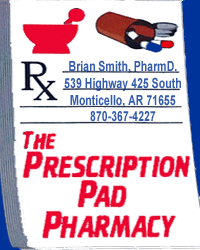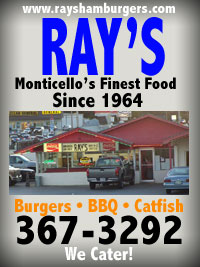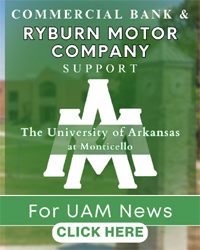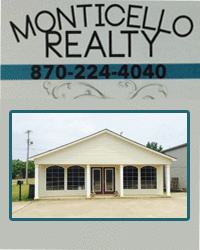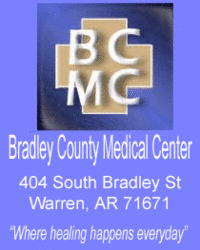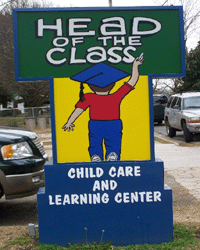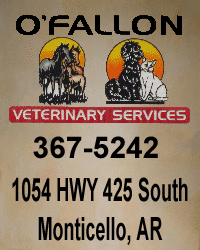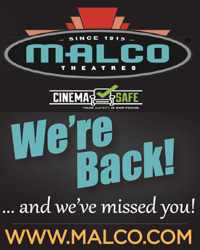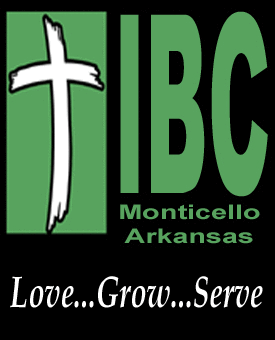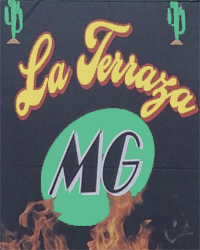Monticello Memories – Tour of Monticello’s North Main Street #8
October 10th, 2011 byThis week we will discuss the last block on the west side of North Main. I have chosen to try to cover the entire block because it not only faces Main Street, but also the heart of Monticello – the town’s Square. I had stopped earlier at the First Baptist Church so we could return and review some of the other businesses on that last corner block on North Main Street as we begin our “sentimental journey” around the Square.
I am told that much of the northern part of that block’s usage hasn’t changed significantly over the years as it was mainly used as a “parking area” for wagons, horses and buggies long before the “horseless carriages” came along.
The easternmost side of that block running down North Main yields many memories as there were once several businesses along that side. Around 1879, Dr. Robertson’s drug store stood on the northeast corner of the street. Robinson’s Dry Goods sat to the right of the drugstore. The others businesses on that side of the block at that time have been lost to history.
By the 1930s a black residential hotel now stood on the northeast corner parallel to First Baptist Church and facing North Main. (This area is now part of the Union Bank parking lot.) It was a two-story building with a small café with a counter and stools was on the bottom floor. The proprietor’s name was Nancy Brandon. She died and I am told that the business was gone prior to World War II.
At the same time and next to the old residential hotel, another café lunch counter once stood. Called the Jolly Peasant, it was operated by Raoul Giffen and also served as the bus station for a time. Mr. Giffen was a brother to the late Mrs. Raymond Stephenson.
The office of Judge Kimbro stood by the old Jolly Peasant. He was an attorney and was remembered as being disabled. Judge Kimbro was the grandfather of Kim Ward of War Eagle Boats.
Moving south down the block, the next business was the print shop of N. D. Cotham. Mr. Cotham was the sole proprietor and staff in the operation. It is remembered that he had an older hand-fed press similar to the one at the museum. He printed many funeral notices and hand delivered them on the square, the center of community life at the time. In his earlier years in Monticello, Dr. J. P. Price had a clinic located next to the print shop.
Jimmy Boone’s café was next. He and his wife Pearl ran the restaurant before the days of fast food chains. Pearl was a sister to Mrs. Colie Porter. (I had often wondered how so many businesses were located on this street until I began to notice how many small businesses can fit into a strip mall!)
Union Bank was begun on the southeastern corner facing the Square in 1915. Please allow me to step back in time and fill in a few interesting facts about the emergence of Union Bank.
Monticello Bank was the first bank in Monticello. It opened in 1877 in the area where Mullins’ Insurance is now located. In 1902, the Citizens Bank was opened on the opposite corner of the block and where the Arkansas Power and Light (AP&L) office once sat. The two banks were actually “catty- cornered” from each other on the corner of McCloy and Union streets. In 1915, Monticello Bank and Citizens Bank consolidated to form the Union Bank & Trust Company and moved to the property on the corner of McCloy and Main where the bank now stands.
At one time, A. T. Cotham had a store beside the 1915 bank property. It was rather like a general store and sold all household goods other than foodstuffs. It sold clothing, piece goods or fabric, shoes and the like. Next to Mr. Cotham’s store stood Douglas Pope’s Grocery. (As you can see, the north side of the Square also resembled a shopping mini-mall at one time.) There was also a store operated by a Mr. Drinkuth on that block on the north side of the Square.
Most of the property once housing the Cotham, Pope and Drinkuth stores more recently housed Harvey Thomasson’s Fabrics store, and later a sound store. A gift shop and jewelry store operated by Fran Fitzwater also filled the space and this latter property was the original site of Cablevision when P. Q. Gardner first brought the service to town.
The gas company had occupied the next building since 1929. Monticello got its first electricity in 1901 when William Anderson spearheaded an effort to get a steam powered plant. Electricity is remembered on Bolling Street as far back as 1902, although it consisted of light bulbs in sockets hung by wires from the ceiling. As stated earlier, the corner building of that northern block of the Square housed the electric company (AP&L) for many years.
At one time an alley ran behind the businesses and a north-south passageway separated the bank from other businesses on the block. This passageway became an early “drive-through” bank when the time and the traffic count first necessitated such a feature. You entered the passageway from McCloy Street on the Square and exited out the back.
Gas lights were attached to the west wall to light the passageway. When the bank remodeled and “took-in” the area placing the drive-through in back of the bank, those gas fixtures were sold. They later changed owners and were converted to electricity and are still in use at a local residence.
We are all aware that Union Bank gradually purchased the entire block, razed the old buildings, and, after several remodeling and additions, now utilizes the entire block for their banking operations.
Much has changed on the north side of the square since Monticello’s beginnings. This article has dealt mainly with remembrances of changes since the 1930s, or the last 80 years, by some of Monticello’s most respected citizens. No doubt others may have other memories, so I apologize for anything I may have inadvertently left out.
Come see us at the Museum! We are open Fridays 1-5 p.m. and Saturdays and Sundays 2-5 p.m. Drop in for a visit!
Choose another article
Newer article: Monticello Memories – Tour of Monticello’s Main Street #7
Older article: Tractor Trailer – Farm Trailer Collision on 425 South






